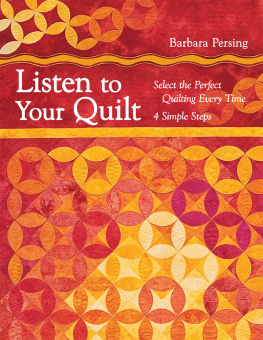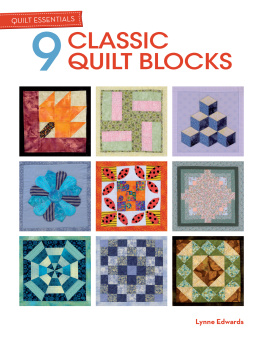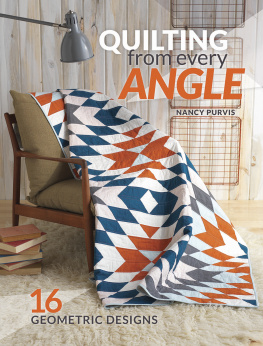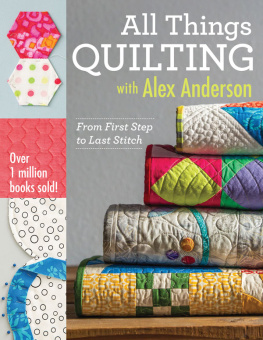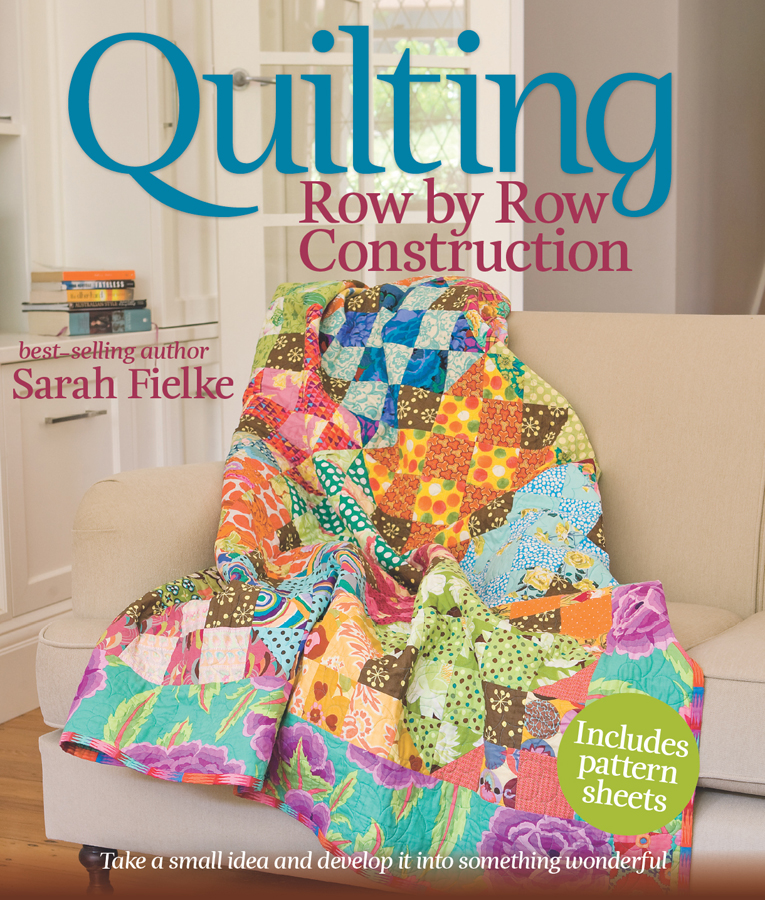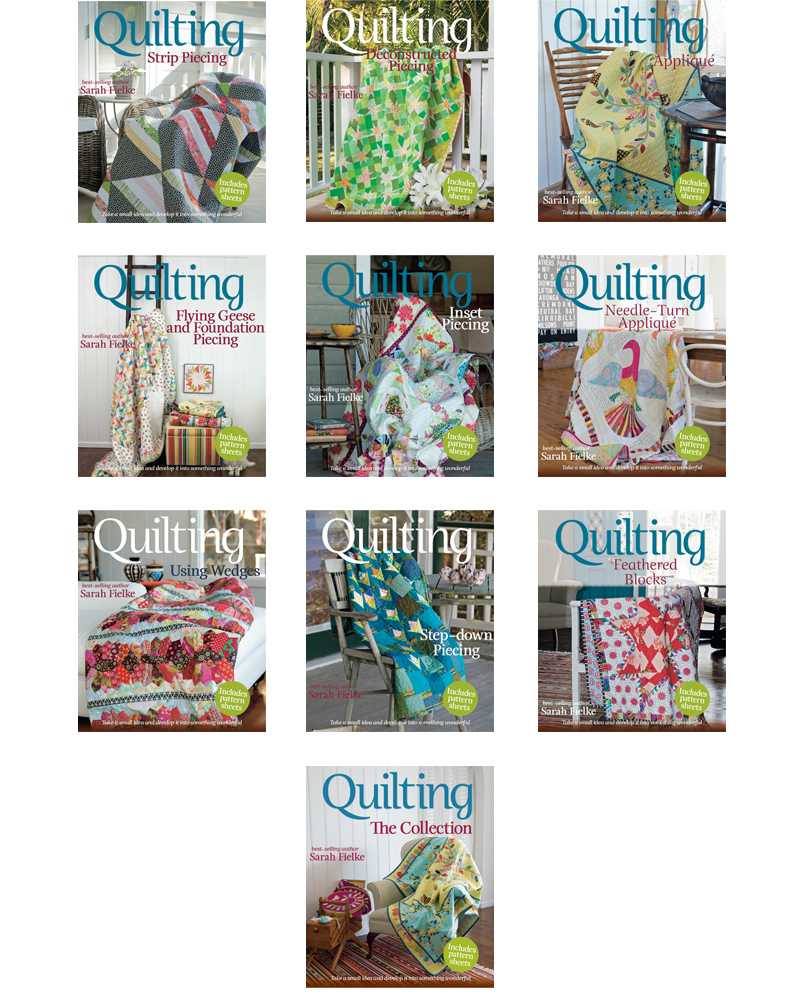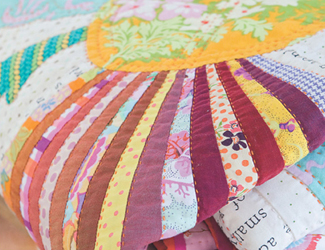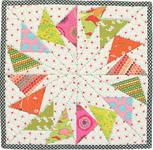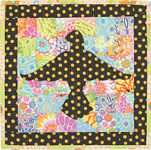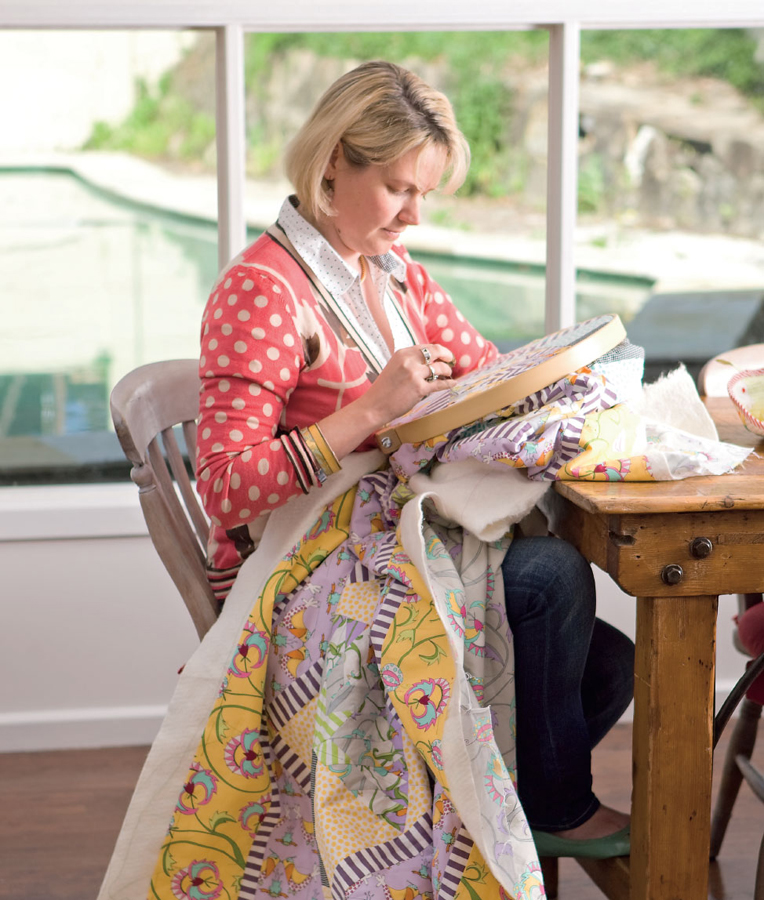Introduction
W riting this book and designing and making the quilts that are in it has been the biggest adventure I have ever had.
They say that from little things, big things grow. When I started my new little business at the beginning of 2010, I wondered just what I would be able to grow from it. It was a leap of faith to leave my previous business partnership, Material Obsession, and begin again on my ownbut things are growing and putting down roots everywhere I look, and life is very exciting!
I have written two quilt books before this one and also written articles for magazines. But writing this book has meant deciding on what my own personal style really is, distilling it and applying it liberally to anything that came into contact with the creation of Quilting.
To find just what that style is, I needed a huge amount of self-examination, and also examination of my quilts: what I like and dont like about them; why I made them; and what I think works and doesnt work about them. Doing all this and sticking with what I found has required a lot of discipline and focus.
Why am I telling you all this? Because every quilt you make should be an adventure, and every new project should be a project in self-awareness and discovery.
Lets not get too highbrow here, though. I dont expect that all of you are going to go out and reinvent your quilting lives because I tell you to. What I do hope you take from this book, however, is the courage to try something different, to experiment with techniques, colours or textures that you may not have tried before, and discover what inspires, fulfils and delights you about the quilts that you make.
Every new project you start should be a project in self-awareness and discovery
The pairs of quilts in this book are designed to be like little lessons, although you certainly dont have to use them that way. Each pair is a dolly (or small) quilt, and a larger quilt to go with it. The pair of quilts uses the same technique to arrive at a finished product. The idea is that if you have not tried a technique before, you can make the small quilt first as a tester, to see whether the style of working suits you. That way, you can expand your skill base without committing to a big bed quilt every time. From little thingsyour dolliesyou can grow a large quilt, or use the skills you have learned to grow your own design.
You could also make all the dolly quilts as a collection. There are loads of websites on the Net, showing off dolly quilt collections, both antique and modern. They look wonderful displayed on a wall, framed, or even made into a clutch of cushions to brighten up a couch.
Try to use the quilts in this book to find out more about growing your own quilting. Why do you choose the fabrics you do? Do your quilts look the same every time, or is every one different? Do you usually choose the same style of fabrics for every quilt? Do you often make quilts with only three or four fabrics in them, or do you cram so many fabrics in that you cant see the wood for the trees? Do you love your quilts, do they make you happyand why do you make them in the first place?
I make my quilts because if I didnt, I would be a very cranky girl indeed! I need to make them to feel happy and useful. They are something that is entirely mine but, at the same time, something that I share with others. All my life, I have had a creative outlet of some kind, but until I came to quilt designing, I didnt realise how unfulfilling those other outlets were to me. I love to make my quilts; I love to design them and to use them, and I love others to use them. Whether or not other people think they are good or worthy is to me a bonusI would still make quilts even if no-one but my children saw them. They make me feel energised and excited and full of possibilities.
From little thingsyour dolliesyou can grow a large quilt, or use the skills you have learned to grow your own design
I design from my stash, and I encourage you to do the same. If you dont have a large stash, I encourage you to start growing one! You dont need huge amounts of fabric: even 20-centimetre pieces can be the seeds of a diverse quilt, somewhere down the line.
My stash is large, but its never large enough. I dont ever feel bad about how much fabric I havethe fabric is as essential to my inspiration as the actual construction of the quilts.
Buy fabrics because you love them and because they make your heart sing, not because they have a specific purpose. One day, the perfect fabric will jump right into your hands from your cupboard, without your ever knowing the reason for which it was bought! These random discoveries are what make your fabric choices interesting and exciting rather than pre-determined.
Get excited, get passionate! Nothing is wrong if you love the finished product. Go on, get growingI mean, sewing.
Yes, I meant now! What are you waiting for?
Sarah Fielke
Choosing fabrics
T he question I am asked most often is how I choose my fabrics, and what makes me use certain fabrics together. Im sorry to say that I dont have a definite answer for you. All I can do is tell you what kind of fabrics I buy and how I know that they are right together.
My stash is full of fabrics in differentsized graphics. This is just as important as having a good range of colours. My fabrics are divided by colour, but also often by tone and print size. I try to make sure that I have a good range of lights, mediums and darks in all the colours in my stash: for example, my blues range from a very pale powder blue through aqua and cerulean right through to a very dark navy. Within those colours, there will be small, medium and large prints, and always, always, spots and stripes.
I have lots of small graphicslittle flowers, small checks and spots, tiny motifs and pin stripes. Reproduction ranges and shirtings and 1930s prints are great places to find smaller prints.
Then there are the medium-sized prints, the ones that would be the most present in most peoples stashes. These prints include florals, tone-on-tones, stripes, checks and spots. Modern fabric ranges lean mainly into the medium range in both graphics and tone. Thats all fine, but you need to make sure that you have variations in colour, graphic and tone if you want to create movement and interest in your quilts.
Many quilters shy away from large-scale prints, not knowing how to use them except in large pieces. I always have a good range of large prints in my stashI love that when you cut a large print into small pieces, you get so much more diversity and interest into your quilt than you do with a smaller print, in conveniently co-ordinating colours! And, of course, a large print always makes a striking border.


